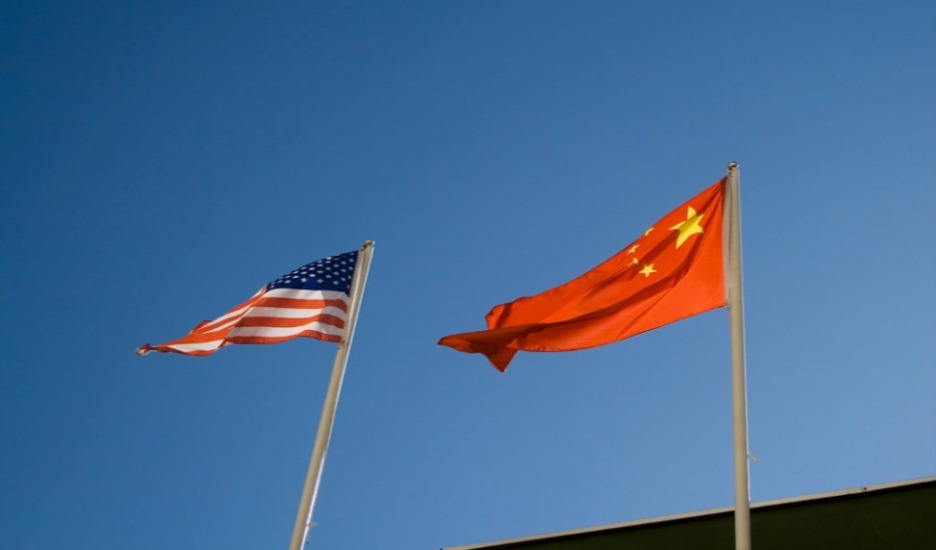The South China Sea Arbitration: Implications for the Senkaku Islands
One of the big takeaways from the South China Sea arbitration is that the high-tide features in the Spratly Islands are mere “rocks” under Article 121(3) of the UN Convention on the Law of the Sea because they “cannot sustain human habitation or economic life of their own.” This means that even the largest islands within the group lack an exclusive economic zone and a continental shelf.
Published by The Lawfare Institute
in Cooperation With

One of the big takeaways from the South China Sea arbitration is that the high-tide features in the Spratly Islands are mere “rocks” under Article 121(3) of the UN Convention on the Law of the Sea because they “cannot sustain human habitation or economic life of their own.” This means that even the largest islands within the group lack an exclusive economic zone and a continental shelf. It also means that the separate question of sovereignty over the islands themselves is suddenly much less consequential than it might have been: whoever has title over the land now enjoys a diminished package of maritime rights that spatially extend no farther than a 12-nautical-mile territorial sea and an additional 12-nautical-mile contiguous zone.
This outcome is not only significant for the South China Sea; it also suggests something about the status of disputed features in the East China Sea: the Senkaku Islands. Simply put, the UNCLOS tribunal’s exposition and application of 121(3) strongly suggest that the Senkaku Islands are rocks. This is a setback for Japan, which has the superior claim to title, but might help to deescalate tensions between China and Japan by substantially reducing their legal incentives to contest each other’s claim.
I’ll start with 121(3)’s text: “Rocks which cannot sustain human habitation or economic life of their own shall have no exclusive economic zone or continental shelf.” Due to a lack of precedent and divergent commentary, there’s been quite a bit of uncertainty about the meaning of this language. The tribunal, however, resolved much of it in favor of treating close cases as rocks.
Particularly noteworthy for present purposes is the tribunal’s application of 121(3) to Itu Aba / Taiping Island—the largest and least rock-like of Spratlys. According to evidence cited in the ruling, Itu Aba has had fresh-water wells of sufficient quality and volume to support small groups of people; its vegetation has included, at one point or another, coconut, banana, plantain, and papaya trees, along with fields of palm, pineapple, cabbage, radish, and sugarcane; and workers there have at times operated small animal farms. The soil, moreover, contains sizable quantities of phosphate, and the surrounding waters have supported an abundance of sea life. Such conditions made it possible for fishermen to inhabit the island on a temporary basis for “comparatively long periods of time.” In addition, Japanese companies extracted economic benefits from Itu Aba for over twenty years starting in 1917. One company employed 600 workers to mine nearly 30,000 tons of guano, and built dorms, warehouses, a clinic, an analysis room, a weather station, a jetty, and mining tracks on the island to support its activities. Another hired roughly 40 workers to use the island as a base of operations for fishing in the surrounding waters. A publication from 1941 reported that still two other companies had a combined total of 130 personnel residing there “continuously.”
This evidence clearly suggests a capacity to sustain certain forms of human presence and economic activity. The tribunal, however, designated Itu Aba as a rock by narrowly interpreting 121(3)’s key terms.
First was the term “human habitation.” According to the tribunal, this entails the “non-transient presence of persons who have chosen to stay and reside on the feature in a settled manner,” and requires “conditions sufficiently conducive to human life and livelihood for people to inhabit, rather than merely survive.” In other words, habitation refers to presence for “an extended period of time” by a “settled group or community for whom the feature is a home.” Applying this standard, the tribunal concluded that Itu Aba is not “obviously inhabitable” in light of its physical characteristics. There has been potable water and vegetation “capable of providing shelter and the possibility of at least limited agriculture to supplement the food resources of the surrounding waters.” Fishermen, moreover, have survived there “principally on the basis of the resources at hand.” Yet the island’s “capacity even to enable human survival” is “distinctly limited.” Historical use confirmed as much. The island served as “a temporary refuge and base of operations for fishermen and a transient residence for laborers engaged in mining and fishing,” but nothing resembling a stable community ever formed. The temporary presence of migrant workers for a “few short years” failed to suffice because the purpose of their presence was not to “make a new life for themselves on the island[.]”
Second was the phrase “economic life of their own.” The tribunal explained that “economic life” means “more than the mere presence of resources,” and that “some level of local human activity to exploit, develop, and distribute those resources would be required.” “Of their own” in turn means that the feature(s) “must have the ability to support an independent economic life, without relying predominantly on the infusion of outside resources or serving purely as an object for extraction activities, without the involvement of a local population.” Itu Aba failed to meet these standards, too. Although the island supported certain kinds of economic activity, all of it was “essentially extractive in nature (i.e., mining for guano, collecting shells, and fishing)” in the sense that it “aimed to a greater or lesser degree at utilizing the resources [present] for the benefit of” populations elsewhere. This was inadequate.
A number of commentators, myself included, have characterized the Senkaku Islands as fully entitled islands rather than rocks. But that position now appears untenable. Indeed, there are several ways in which the Senkakus, even as a group, present a similar or even easier case for rock status than Itu Aba. Consider the following timeline, which I pieced together from archival materials and an academic article that the Japanese Ministry of Foreign Affairs recently highlighted as presenting an accurate account of the islands’ history: Prior to the late 1800s, there was essentially no human presence of any kind. In 1890, a Japanese company placed roughly 80 fishermen on the largest of the islands (Uotsuri) to build huts and collect shells and other marine resources, but these individuals were present at most “for seasonal periods.” Other groups of fishermen also stayed on the islands intermittently, but only “for two to three months at a time, or at the longest half a year” because the “environment wasn’t suitable for longer stays.” In 1893, a group of workers stranded on Uotsuri managed to survive for an unspecified period. The food they consumed, however, was non-native, and they were “almost at the end of their endurance” when they were finally “rescued.” In 1896, the Japanese government leased some of the Senkakus to an Okinawan entrepreneur who used them and the surrounding waters as a source of albatross feathers, terns, bonito, and guano, all of which he sold in Japan or exported for profit. At the peak of these operations around 1912, there were 248 people present, but these individuals were “hired—not so much as pioneers to develop new territory than as migrant labor employed to do a certain job,” and they “received payment in return for agreeing to live and work on the islands” only “for a certain period of time, normally a year or six months.” And although the entrepreneur constructed dorms, warehouses, work huts, and a boat-building dock to support his operations, there were “no personally owned houses” present. Since the expiration of the lease, no one has lived on the islands even temporarily, and they are uninhabited today.
Much of this sounds similar to Itu Aba. Neither appears to have a naturally occurring supply of food, water, or shelter in quantities sufficient to enable a group of persons to live for an indeterminate period of time. Neither has ever had a stable community of residents who considered the island their home. Neither has sustained economic activities that are anything other than extractive. Uotsuri is slightly larger than Itu Aba, but the tribunal emphasized that size per se is irrelevant. There appears to be an abundance of resources around the Senkaku Islands, but the same could be said of Itu Aba. Given that Itu Aba is a rock, it is highly likely that the Senkakus are as well.
This strikes me as a major development in its own right. China and Japan have contested sovereignty over the Senkakus in part because of the marine resources surrounding and the hydrocarbons reportedly lying beneath the islands. If sovereignty is unlikely to carry with it an exclusive economic zone or rights to the continental shelf, then the parties simply have less incentive to contest title in the first place. This should be a welcome development for the international community, especially third parties that might be drawn into the dispute if it ever degenerates into open hostilities. But it also means that the tribunal’s ruling is a double-edged sword for Japan, which, in the view of most American legal commentators, has the stronger claim to sovereignty. Tokyo has already called upon China to comply with the UNCLOS ruling and would benefit in various ways if Beijing were to oblige, but this very same ruling has substantially bolstered the argument for downgrading the extent of Japan’s legal entitlements in the East China Sea. How Japan responds will be an issue worth following.


.jpg?sfvrsn=5a43131e_9)


